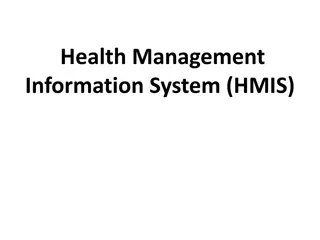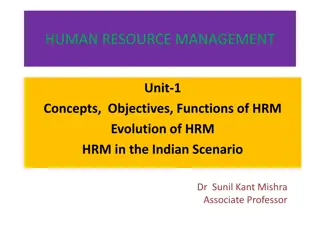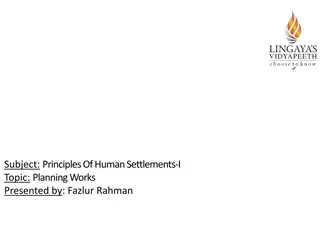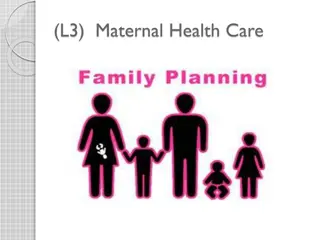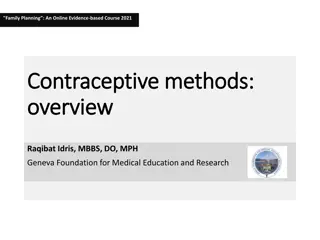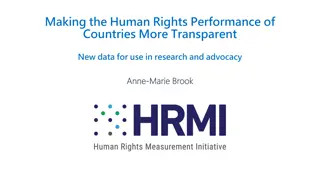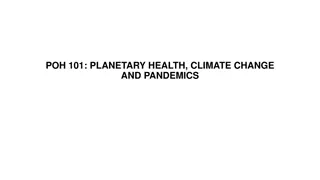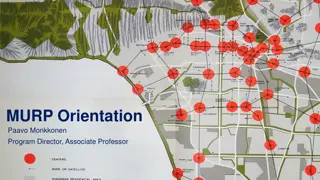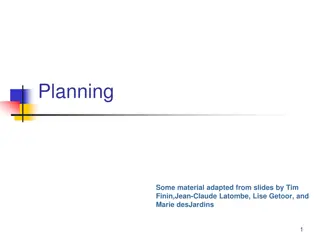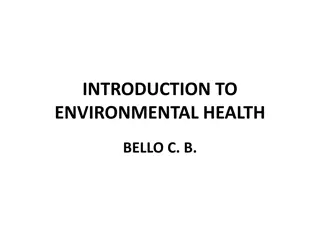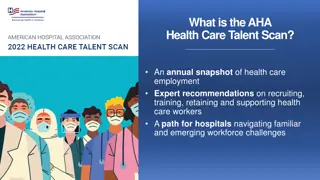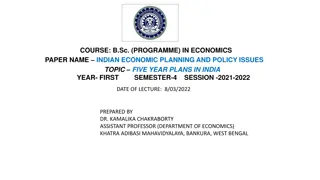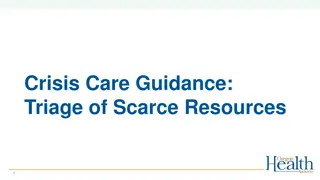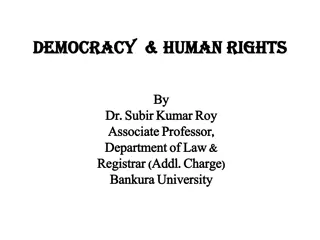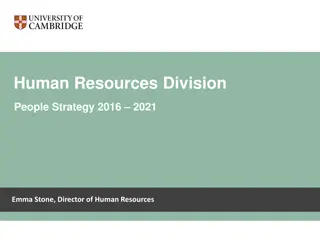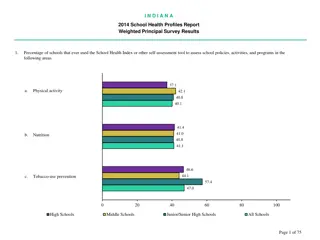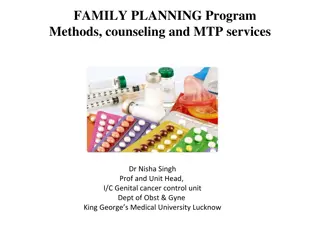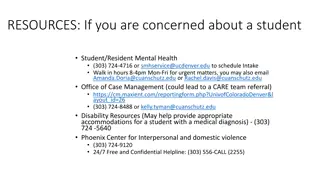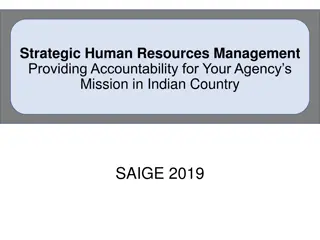Overview of Comprehensive Planning for Human Resources in Health
Comprehensive planning for human resources in health is essential for addressing various pillars of health systems and achieving broader goals such as poverty reduction, quality education, decent work, economic growth, and gender equality. This planning involves understanding the current status, identifying future needs based on demographics and disease burden, ensuring universal health coverage, and optimizing aspects like productivity, accessibility, and acceptability of healthcare services.
- Comprehensive Planning
- Human Resources in Health
- Health Systems
- Universal Health Coverage
- Strategic Planning
Download Presentation

Please find below an Image/Link to download the presentation.
The content on the website is provided AS IS for your information and personal use only. It may not be sold, licensed, or shared on other websites without obtaining consent from the author. Download presentation by click this link. If you encounter any issues during the download, it is possible that the publisher has removed the file from their server.
E N D
Presentation Transcript
Comprehensive Planning for HRH Mona Gupta Advisor HRH HPIP NHSRC HRH HPIP NHSRC 1
Elephant in the room HRH HPIP NHSRC 2
Why HRH Must for moving other pillars of Health systems: Service delivery, Access to Medicines, Leadership and Governance, Health Information System, Finance Not only for health but poverty reduction, quality education, decent work, inclusive economic growth and gender equality HRH HPIP NHSRC 3
Fundamentals Fundamentals of of Planning Planning
Where are we now? Data : How reliable How updated Time to get it reasonably robust: e-Samiksha, Pragati, NITI SHI, Conditionalities HRH HPIP NHSRC 5
Where do we want to go Where do we want to go Demography, burden of disease Referral chain Health seeking behaviour Level of productivity Work timings Equipment: semi-automatic, automatic Digitization Task sharing and task shifting HRH Forecasting In terms of numbers Skill mix Standards Work -Load Indicators for Staffing Needs Time motion HRH HPIP NHSRC 6
Universal Health Coverage (UHC) and Human Resources for Health (HRH): Effective coverage Universal Health Coverage (UHC) and Human Resources for Health (HRH): Effective coverage Services that entail a cost to the user 1.UHC cube Y Axis represents direct costs, especially the proportion of all health services not requiring a fee at the point of services. 2. HRH cube: theoretical coverage by availability of health workforce Quality Service Utilization Acceptability Accessibility Gap in essential services Availability Z Axis represents the proportion of essential services covered Population needing services but not covered Population: Who is provided effective coverage? Effective Coverage Gap X Axis represents the population, specifically the percentage of the population covered by the health service Adapted from The world health report (2010), UN Economics and Social Council (2000) and Tanahashi (1978)
Aspects of HRH Planning Productivity: Case load Cost effectiveness Availability: Numbers Supply Vs Demand Decent Job Opportunities Accessibility: Distribution Public vs Private Urban Vs Rural Plains Vs Hilly-Difficult areas Acceptability Language Culture/Tribe Skill-level Stream of medicine: Quality: Capacity/Skills Person Centric Behaviour HRH HPIP NHSRC 8
Way out: Start with :Population and need based geographically well distributed health facilities HRH as per IPHS 2022 and caseload Fine tune as you go HRH HPIP NHSRC 9
Leveraging Partnership What is the requirement of the district or the State? What are the strengths and the mandate of the Agency? Only if these two match could the collaboration be beneficial to the community and the health system and stay longer term. PPP: not as a general strategy but to be leveraged where required in the form of Strategic Purchase. E.g. Assam s Boat Clinics Do not transplant innovations/ideas from other settings without a pilot testing in your context and a good evaluation HRH HPIP NHSRC 10
If you fail to plan, you plan to fail Immediate (within 1 year): Fill up vacancy, find out reasons if vacancies remain Medium(2-3 years): Start planning for posts you will require in 1-3 years Long term(5-10 years and more): Demographic and epidemiological trend HRH HPIP NHSRC 11
Vacancy Sanctioned (R+C) In-place (R+C) Vacancy% (S-P) Gap in numbers Required Gap% (R-P) In numbers 52 122 15 7 103 186 MPW (M+F) 1983 1426 1374 4% 31% 557 2216 262 38 172 -3 Nurses 3803 1587 1465 8% 61% Lab Technicians 504 242 227 6% 55% Pharmacists Medical Officers Specialists 288 769 377 250 597 380 243 494 194 3% 17% 49% 16% 36% 49% Requirement as per IPHS 2022 for existing facilities, assuming all services as mandated are available Training and Leave reserve would add 15% more numbers HRH HPIP NHSRC 12
Another Scenario: A bigger State Provisions for HRH under PMABHIM and 15th FC would give: 4867 CHO 2448 MO 2298 MPW (M) 3270 Staff Nurses 888 Specialists 127 Dentists, Optometrists, physiotherapists, counsellors each 284 Epidemiologists, Public Health specialist, 307 Data Managers 821 LT HRH HPIP NHSRC 13
Leveraging each source of funding 15th FC PMABHIM NHM Less flexible More flexible HRH HPIP NHSRC 14
Thanks 15 HRH HPIP NHSRC




